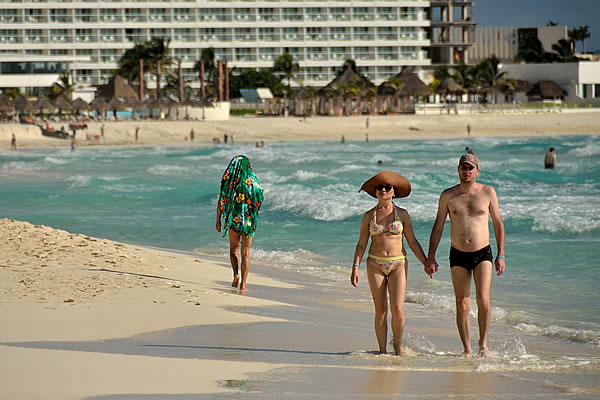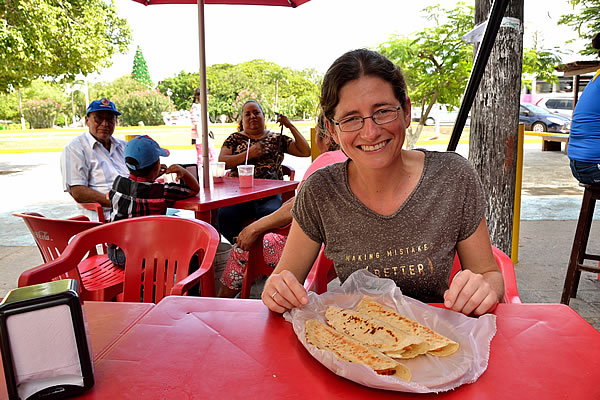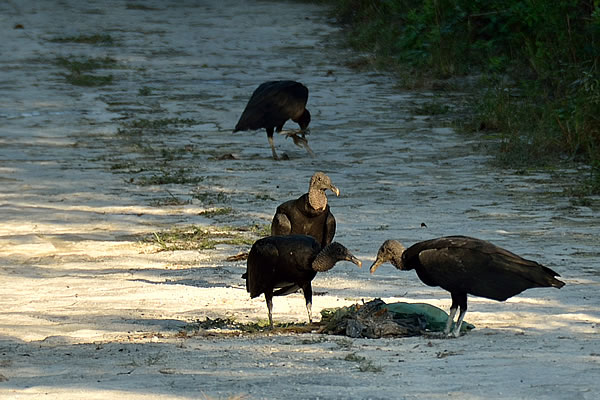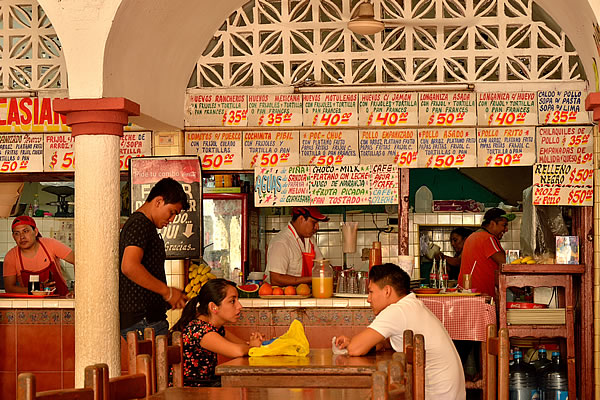

| Arriba, Arriba! Andale, Andale! | |
Barranquitas (Puerto Rico) to Campeche (Mexico), December 2016
|
|
|
|
|
We have the feeling that our visit to Latin America is now really starting. We have been in recent weeks in Puerto Rico, but that feels more like the 'Caribbean' than Latin America. But now that we are on a plane of Jet Blue, which is going to bring us from San Juan in Puerto Rico, through Ft Lauderdale in the US, to Cancun in Mexico, it is really going to happen. And Mexico is officially not even a part of Central America. For Ivonne, this is the first time she is traveling to this area. I was here twice during my student days. But that was in the nineties of the last century, and it seems that a lot changed since that time. Until the 90s of the twentieth century, Central American countries were run by dictators, military juntas and rebels. Mexico and Costa Rica were the only exceptions. Oppression and striving for power led to brutal scenes of repression, sometimes even leading to civil war. All this was fuelled by money from the US and the Soviet Union, each having their local favourites. With the end of the cold war, it also became quieter in Central America. But still, the area has it problems. Just look for example at the drug-related violence in Mexico, and the incessant flow of Central American migrants trying to reach the US, often risking their lives. |
|
 |
|
Couple on the beach of Cancun |
|
We begin our trip through Central America, and we include Mexico just for the convenience, on the Yucatan Peninsula. It is by far the safest part of the country and is characterized by beautiful beaches and impressive Mayan ruins. And that mix appears to be a blockbuster. Millions of Americans, Canadians and Europeans fly here every year to spend their holidays. Large parts of the Yucatan coast have now become tourist ‘ghettos’, where everything revolves around the tourist. Destinations as Cancun, Isla Cozumel, Playa del Carmen and Tulum have little to do with Mexico anymore, but offer vacationers the ingredients they're looking for while spending their holiday time: white beaches, beautiful hotels, tourist markets and impressive Mayan ruins, just a short drive away. And all that for a very reasonable price. We spend the first few days in the centre of Cancun. We are not really beach people and therefore avoided consciously the so-called "hotel zone", where the hotels stands shoulder to shoulder overlooking the fantastic blue ocean. By law, all beaches are public beaches in Mexico, so hotels cannot annex stretches of beach to make it their ‘private’ beach. However, the coast is so extensively built, that it is not easy to find an alley between two hotels that provides access to the beach. The receptionist at our hotel therefore gave us the tip to access the beach through the hotel lobby of one of the hotels. A generally accepted way to reach the public beach because of the small numbers of alleys left, that unlocks these beaches with public roads. |
|
 |
|
Ivonne enjoying quesadillas in Cancun |
|
|
We always prefer to stay at a hotel in the centre of town. Not only is it usually much more fun because of the hectic pace that characterizes a city centre, but there are usually also much more shops, restaurants and bus stations around. Of course it remains a sport to select a hotel that is quiet, so your sleep is not spoiled by, for example, a local pub that never shuts down. The white beaches are to us not so interesting, but Yucatan has more on offer. This part of Mexico is known for its huge variety of birds. An example: In the small town of Puerto Morelos, just 35 kilometres from Cancun, is a botanical garden with a size of a little bit more than 120 soccer fields, which houses more than 250 different bird species. In the wild, of course. Yucatan is still a very green part of Mexico. You can see it already from the airplane window when you arrive or depart from the Cancun airport. The Yucatán vegetation consists largely of tropical rainforests, which towards the south is getting thicker and higher. And these forests still harbour large numbers of birds, including colourful toucans and busy hummingbirds. For us, Yucatan is the perfect start of our visit to Latin America. It is a new continent for us, and it's always nice to take it easy in the beginning. We want to do a Spanish language course in January and use the first weeks here to spot some birds, visit Mayan ruins and enjoy the colourful Mexican street life. We are already one month in Mexico now and got to know the Mexicans as extremely relaxed and friendly people. We have also learned that it is not difficult to go off the beaten track, even here in Yucatan. We visited for example the town with the wonderful name Felipe Carrillo Puerto, not only to visit the very bird-rich forests around town, but also to stare at the "talking cross". In a small church, somewhere in the centre of town, of which 99% of the population is of direct Mayan descent, is an old and weathered wooden cross that spoke to the Mayans in 1848 to motivate them to hold on in the so-called cast war, which broke out in 1847 between the Mayas on one hand, and the Spaniards and the Mexican government on the other. In this town tourists are rare and it is not common that local children stare at you as of you are from another planet. Many parts of the Yucatan peninsula are overrun by tourists. Most of the time this is not a problem because the cities are often large enough to avoid the really big crowds, who often stay only on and around the main town square. At the Mayan ruins, it is more complicated. But here is a solution. If you make sure you are there early in the morning when the gates open at eight o'clock, you have a few hours before the arrival of the tourist coaches. You do not have the ruins to yourself, but the numbers are acceptable. We are now in the regional capital of Campeche. A beautiful colonial town that is still not on the radar of the western tourists, but already on the Mexican one. The Christmas holidays are over and tomorrow it is the last day of the year. A new year begins, undoubtedly with a lot of adventures. |
|
 |
|
Black vultures on Isla Cozumel |
|
 |
|
Hole in the wall restaurant in Valladolid |
|
 |
|
The Temple of the Wind in Tulum |
|
 |
|
Sun sets in Felipe Carrillo Puerto
| |
 |
|
Extreme crowds in the Chichen Itza (Maya) Archeological Site © copyright - Babakoto.eu / 2016 |
|